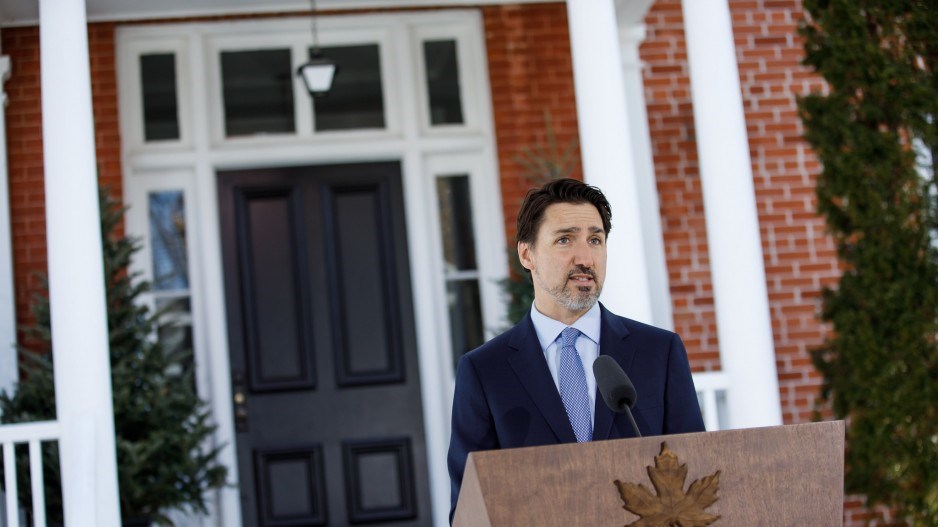Prime Minister Justin Trudeau re-emphasized his calls for Canadians to practise physical distancing and good hygiene as the first national forecasts of the COVID-19 pandemic projects as many as 22,000 deaths.
“We’re in an earlier stage of the outbreak which we have the chance to determine what happens in the weeks and the months to come,” he said Thursday (April 9) during his daily media briefing outside his home in Ottawa.
“The best possible outcome is no easy path.”
The federal government released projections earlier in the day estimating 11,000 people could die if 2.5% of the population (934,000 cases) contracted COVID-19.
The projections also show the potential death toll would grow to 22,000 if 5% of the population (1.88 million cases) contracted the coronavirus.
The government used a variety of modelling scenarios, including strong controls on social distancing and isolating (1-10% infected), weaker controls that featured a low degree of social distancing and isolating (25-50% infected) and no control efforts whatsoever (70-80% infected).
Trudeau said Canadians will have to remain vigilant for a year, later adding that the first wave of infections will last a few months before the economy can restart.
“Normality, as it was before, will not come back full on until we get a vaccine for this,” he said.
“But once we get through this first wave we will develop tools and habits that will allow us to be much more resilient and resistant to further outbreaks.”
Meanwhile, the prime minister also emphasized Thursday’s jobs numbers reflect the lives of individual Canadians hurt by the pandemic’s economic impact.
Statistics Canada data released Thursday revealed the country lost 1,011,000 jobs in March, driving the unemployment rate up 2.2 percentage points to 7.8%.
But Statistics Canada emphasized in its monthly release that its Labour Force Survey was conducted March 15-21 — before much of the pandemic’s impact on the job market had been realized.
More than 4.5 million Canadians have applied for various forms of emergency of unemployment assistance, be it through Employment Insurance or the Canada Emergency Response Benefit.
That means the actual numbers for March, which won’t become clear until next month, are grimmer than what Statistics Canada’s data can reflect based on the period its survey was conducted.
The prime minister was also pressed on why Parliament has yet to be recalled to pass legislation for emergency measures, including the government’s 75% wage-subsidy program.
A small group of parliamentarians was recalled March 24-25 to pass a $107-billion COVID-19 relief package.
But the House of Commons and the Senate has yet to sit since then.
“My understanding is that the legislation itself is largely seen as the right solution by other parties. They might have little tweaks and improvements to make and we look forward to working with them,” Trudeau said.
“But there seems to be a sense from the Official Opposition [Conservatives] that this is the moment to define or determine how Parliament will function in the coming weeks, and they are negotiating around the structures.”
Liberal House Leader Pablo Rodriguez has been working with opposition parties to recall Parliament virtually to minimize the risks of spreading COVID-19.




